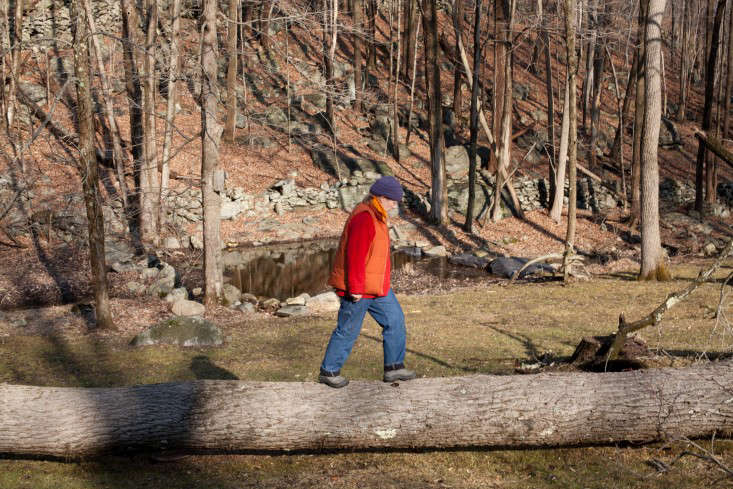Jessica Wickham is a scavenger. Dedicated to sustainable, artisanal use of natural resources, the upstate NY-based woodworker and furniture designer has been retrieving “dead and down” logs from Hudson Valley landscapers since 2004. Inspired by traditional woodworking techniques in Japan (where she lived for five years), Wickham wants each piece of wood to speak for itself.
She mills and dries them at her sawmill in Bullville, NY. At Wickham Solid Wood Studio in the nearby town of Beacon, Wickham designs and builds furniture that combines natural forms with modernist elements, often employing exposed joinery. Among her newest designs: beautiful nesting stools and live edge cutting boards.
Photography by Meredith Heuer.

Above: The company maintains an inventory of more than 10,000 board feet of kiln-dried natural edge slabs, featuring the hardwood species common to the northeastern deciduous forest: black walnut, white oak, black cherry, white ash, and red elm, among others.

Above: Her story starts with a tree – either one that has recently fallen or is scheduled to be taken down for some reason. Here a black walnut tree is taken down to make room for the property owner’s daughter’s wedding.

Above: After the tree is down, Wickham studies it to decide not just how to cut the wood, but also what its possibilities are.

Above: Each board goes through a giant bandsaw mill machine that slices it into boards that will be kiln-dried at her mill in Bullville, NY.

Above: After each board is kiln-dried, it heads to her studio about 20 miles away in Beacon, where Wickham decides if it will become a larger piece of furniture (think table, headboard, bench) or one of her signature nesting stools or live edge cutting boards.

Above: If she is going to use a slab whole, it often requires a butterfly in-lay to stabilize the piece.

Above: How did Wickham become a woodworker? The daughter of an architect, studied cultural anthropology and then, a few years after college, moved to Tokyo. “I was so moved and energized by the prevalence of super high quality hand made objects that you find in everyday life in Japan,” she recently said in an interview in The Artful Mind.
To teach herself how to use traditional Japanese hand tools such as chisels and planes, she made her own toolbox. “It took me a whole year,” she said, “working slowly, trying to understand the mysteries behind these amazing tools.”
She was so inspired by Japanese tools and woodworking techniques that she decided to dedicate her life to it.

Above: In the studio, she hand-planes the wood until it is smooth.

Above: In other cases, she cuts down wood into smaller pieces, leaving a live edge to make one of a kind cutting boards.

Above: “All of my work is designed to be used,” Wickham said. “What could be better than using a beautiful object on an everyday basis?”
A Black Walnut Charcuterie Board measures 11 3/8 inches long by 7 5/8 inches wide and is $50.

Above: One of Wickham’s signature pieces is her nesting stool set, inspired by the design of Japanese bathhouse stools. For prices and more information, see Jessica Wickham.
See Live-Edge Tables in the Spirit of George Nakashima for 12 favorite renditions.









Have a Question or Comment About This Post?
Join the conversation